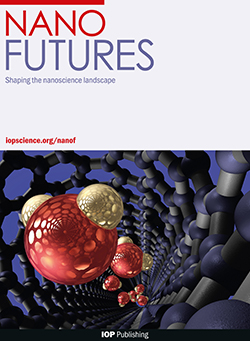Editorial board
The Editor-in-Chief of Nano Futures provides leadership and management of the Editorial Boards and influences the strategy of the Journal, in co-operation with the Publisher.
The Editorial Boards consist of an Executive Editorial Board, focusing on advocacy and commissioning, and a non-executive Editorial Board, focusing on advocacy and peer review, with membership of both Editorial Boards comprising groups of prominent scientists in the Journal’s field. The role of the Editorial Boards is to act as ambassadors for the Journal and IOPP; to foster strong and loyal relationships between the Journal and the scientific community and to channel community feedback to IOPP.
Editor-in-Chief
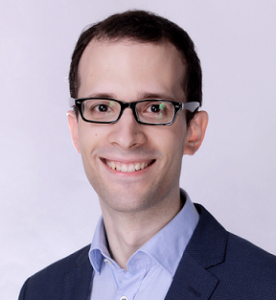
Vincenzo Pecunia, Simon Fraser University, Canada
Printable optoelectronic materials and devices, sustainable optoelectronics, printable energy harvesters, printable sensors.
Vincenzo Pecunia is an Associate Professor and the Head of the Sustainable Optoelectronics Research Group at Simon Fraser University (Canada). His research focuses on printable semiconductors and their applications in photovoltaics and sensing. He earned his Ph.D. in Physics and conducted postdoctoral research at the Cavendish Laboratory, University of Cambridge, UK, from 2009 to 2016. Before that, he earned his BSc and MSc in electronic engineering at Politecnico di Milano (Italy). His research breakthroughs include pioneering lead-free-perovskite-based indoor photovoltaics, ultra-low-power printed-thin-film-transistor electronics, and advanced spectrally selective printable light sensors. In recognition of his contributions, Prof. Pecunia has received many awards and honours, including the Fellowship of the Institute of Materials, Minerals & Mining (FIMMM), the Fellowship of the Institution of Engineering and Technology (FIET), and the Fellowship of the Institute of Physics (FInstP).
Executive Editorial Board
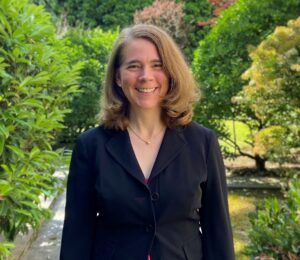
Laurie Calvet, CNRS-Université Paris-Saclay, France
Nanotechnology for biologically inspired computing hardware, semiconducting devices, low temperature electrical transport in nanodevices.
Laurie Calvet is currently a research scientist in the French CNRS at the Laboratoire de Physique des Interfaces (LPICM) at the Ecole Polytechnique in Palaiseau, France. Her studies at Columbia university (B.S.) and Yale University (M.S., M. Phil, PhD) were in Applied Physics and Electrical Engineering. In the past 10 years her group has worked on using ideas from biology to create novel devices and circuits that can be used for new computing paradigms.
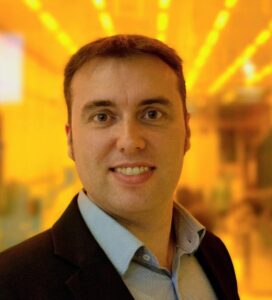
Mario Lanza, King Abdullah University of Science and Technology (KAUST)
2D materials-based devices, hybrid 2D/CMOS microchips, memristors, scanning probe microscopy.
Mario Lanza got the PhD in Electronic Engineering in 2010 at the Autonomous University of Barcelona, where he won the extraordinary PhD prize (one winner per year). In 2010-2011 he was NSFC postdoctoral fellow at Peking University, and in 2012-2013 he was Marie Curie postdoctoral fellow at Stanford University. In October 2013 he joined Soochow University as Associate Professor, and in March 2017 he was promoted to Full Professor. Since October 2020 he is an Associate Professor of Materials Science and Engineering at the King Abdullah University of Science and Technology (KAUST), in Saudi Arabia, where he leads a group formed by 10 PhD students and postdocs. His research focuses on how to improve electronic devices and circuits using 2D materials, with special emphasis on resistive switching applications. Prof. Lanza has published over 185 research articles, including 1 Nature, 2 Science, 6 Nature Electronics, and multiple IEDM proceedings (among others), and has registered four patents – one of them granted with 1 million USD. Prof. Lanza has received multiple world-class distinctions, like the IEEE Fellow, the Young 1000 Talent, and the Marie Curie (among others), and he is a Distinguished Lecturer from the IEEE – Electron Devices Society. Prof. Lanza is the Editor-in-Chief of the journal Microelectronic Engineering (Elsevier), and he serves in the executive board of many other journals and international conferences, including IEEE-IEDM and IEEE-IRPS.

Bozhi Tian, The University of Chicago, USA
Nanowire materials synthesis, nanowire photovoltaics, nanowire devices in cells and tissue
Dr. Bozhi Tian earned his Ph.D. in Physical Chemistry from Harvard University and completed postdoctoral research in regenerative medicine at the Massachusetts Institute of Technology. At the University of Chicago, his research focuses on developing new materials for bioelectronics, employing semiconductor- and electronics-based tools to investigate (sub-)cellular dynamics and soft-hard interface interactions, and the translational applications of diverse bioelectrical systems. Dr. Tian’s work has been recognized with several honors, including the Raymond and Beverly Sackler International Prize in the Physical Sciences, the Presidential Early Career Award for Scientists and Engineers (PECASE), recognition as an MIT Technology Review Innovator Under 35 (TR35) in 2012.
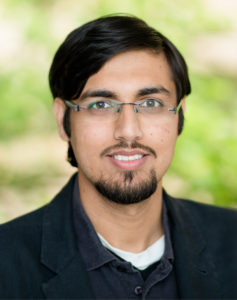
Muhammad Usman, The University of Melbourne, Australia
Computational Science, quantum computing, applied machine learning, materials science and engineering.
Professor Muhammad Usman is Head of Quantum Systems and Principal Staff Member at CSIRO’s Data61 which is Australia National Research Organisation. He has over 15 years of research and teaching experience in the field of quantum computing with a track-record over 100 research papers in high-impact international journals. At CSIRO, Dr Usman is leading a team of researchers working at the forefront of quantum algorithms, quantum software engineering, and quantum security. He is a fellow of the Australian Institute of Physics and serves on the executive editorial board of Nano Futures journal, a committee member of Standards Australia to help in standardisation of quantum technologies and have Associate Professor affiliations at the University of Melbourne and Monash University. Dr Usman is the chair of organising committee of International Conference on Quantum Techniques in Machine Learning 2024, has delivered numerous invited talks in international conferences and has been invited on several panel discussions at national and international meetings. His work was the Winner of the State of Victoria iAward 2024, Innovative of the Year 2023 Award by Defence Industry, Winner of the Australian Army Quantum Technology Challenge in three years in a row (2021, 2022 and 2023), Rising Stars in Computational Materials Science by Elsevier in 2020, and Dean’s Award for Excellence in Research (Early Career) at the University of Melbourne in 2019. Dr Usman is a recipient of prestigious international research fellowships from Fulbright USA (20005-2010) and DAAD Germany in 2010. Dr Usman is a passionate quantum educator and has been promoting quantum education among school children as part of the CSIRO’s STEM Scientists in Schools program.
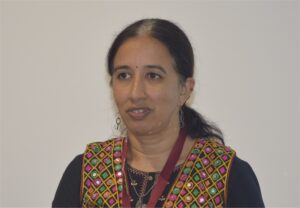
Ranjani Viswanatha, Jawaharlal Nehru Centre for Advanced Scientific Research, India
Nanomaterials, Optical spectroscopy, Magnetooptics, Electronic Structure, Perovskite materials.
Ranjani Viswanatha is currently working as a professor at Jawaharlal Nehru Centre for Advanced Scientific Research. She did her Ph. D. at the Indian Institute of Science. Subsequently, she worked as a postdoctoral fellow at Prof. Xiagong Peng’s laboratory at the University of Arkansas and at the Los Alamos National Lab in Prof. Victor Klimov’s group before joining JNCASR. She is currently a Professor at JNCASR and works in the area of quantum dots. Her research interests range from study of new quantum materials with emphasis on chemical means to attain quantum mechanical properties, electronic structure modulation, use of magneto-optics to study selection rules in perovskites, perovskite plasmonic halides and II-VI semiconductor quantum dots. For her work, she has been awarded several national awards like SERB POWER Fellowship, Karnataka State C V Raman award, MRSI medal, DST Young Nanoscientist award, Sheikh Saqr Fellowship, founding member of Indian National Young Academy of Science, the INSA young scientist medal and chosen as a young associate of Indian Academy of Science, founder member of Indian National Young Academy of Science among many others.
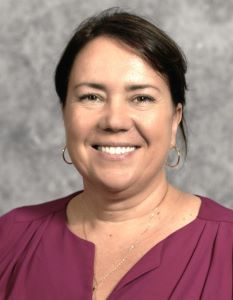
Yaroslava Yingling, North Carolina State University, USA
Molecular dynamics simulation, self-assembly of nanoparticles, polymer nanocomposites.
Yaroslava G. Yingling is a Kobe Steel Distinguished Professor of Materials Science and Engineering at North Carolina State University, USA. She received a University Diploma in Computer Science and Engineering from St. Petersburg State Technical University of Russia in 1996 and a Ph.D. in Materials Engineering and in High-Performance Computing from Pennsylvania State University in 2002. She carried out postdoctoral research at Penn State University Chemistry Department and at the National Institutes of Health National Cancer Institute prior to joining North Carolina State University in 2007. Prof. Yingling leads an active interdisciplinary research program that focuses on the development of advanced multiscale molecular modeling methods and data-science approaches for the design and investigations of properties and processing of soft, colloidal, biomimetic, and biological materials. The Yingling Research Group made substantial contributions in exploring the assembly of biomolecules on surfaces and interfaces, ab-initio design of nanomaterials for industrial and pharmaceutical applications, de novo biomolecular structure prediction, development of multiscale methods for the prediction of properties and responsive behavior of functional hierarchical materials, and application of data-science techniques to heterogeneous and multi-technique characterization data. She received the National Science Foundation CAREER award, American Chemical Society Open Eye Young Investigator Award, NC State Alumni Association Outstanding Research Award, and was named an NCSU University Faculty Scholar and was inducted into the NC State Research Leadership Academy.
Editorial Board
Gary Brudvig, Yale University, USA
Artificial photosynthesis, solar fuels, water oxidation.
Markus Buehler, Massachusetts Institute of Technology, MA, USA
Biomateriomics, nano synthesis, materials by design, hierarchical nanostructures.
Marta De Luca, Sapienza University of Rome, Italy
Semiconductor nanomaterials, magneto-optical spectroscopy, nanophotonics and nanophononics.
Antonio Di Bartolomeo, University of Salerno, Italy
Nanowires, graphene and 2D materials, field effect transistors, non-volatile memories, Schottky diodes and van der Waals heterojunctions, photodetection and field emission.
Su-Ting Han, Shenzhen University, China
Flash memory, memristor, neuromorphic computing, in-memory computing systems.
Stuart Higgins, University of York, UK
Biointerfaces, bioengineering, organic bioelectronics, bioelectricity, image analysis
Dae Joon Kang, Sungkyunkwan University, South Korea
Growth and device applications of inorganic nanostructured materials, development of novel flexible and wearable electronics.
Xiujun (James) Li, University of Texas at El Paso, USA
Nano-biosensors, microfluidic devices, bioanalysis, nanocatalysts, environmental science and technology
Magalí Lingenfelder, EPFL, Switzerland
BioNanoarchitectonics, Operando surface science at solid/liquid and solid/gas interfaces, Self-assembly, Scanning Probe Microscopy, Chirality.
Jia Liu, Harvard University, USA
Soft bioelectronics, cyborg engineering, genetic/genomic engineering, and computational tools.
Teri W Odom, Northwestern University, USA
Designing structured nanoscale materials with exceptional properties. Applications include nanomedicine, nano-lasing, photovoltaics, wetting, and imaging.
Burcu Saner Okan, Sabanci University, Turkey
2D and 3D nanomaterials, nanocomposites, nanomaterial engineering, recycling and upcycling, sustainable manufacturing.
Wee-Jun Ong, Xiamen University Malaysia, Malaysia
Photocatalysis, photoelectrocatalysis, artificial photosynthesis, 2D nanomaterials, heterojunction interfaces.
Anlian Pan, College of Physics and Microelectronics, Hunan University
Growth of low dimensional semiconductor structures, physical properties and device applications of optical and photonic nanostructures.
Virginie Ponsinet, CRPP, CNRS and University of Bordeaux, France
Colloidal nanostructures, applications to metamaterials and metasurfaces / Self-assembled colloids and polymer systems / Light scattering by colloids / Functional nanocomposites based on organized block copolymers/ Structured complex fluids and surfactants self-assembly / Soft nanocomposites.
Paola Prete, University of Salento, Italy
Semiconductor nanostructures, nanoepitaxy, carbon-based and 2D layered materials. Applications include nanodevices, solar cells and single photon sources.
Jens Trommer, NaMLab gGmbH, Dresden, Germany
Nanowires, emerging devices, ferroelectric memory, modelling, cryogenic transport, reconfigurable circuits.
Haibo Zeng, Nanjing University of Technology and Engineering Institute, China
Calculation and optoelectronics of 2D semiconductors, perovskite optoelectronics, luminescent materials, quantum dots, LEDs.
Xiaodan Zhang, Nankai University, China
Silicon solar cells, Perovskite solar cells, Perovskite/Silicon tandem solar cells, Solar to Hydrogen, Solar to carbon dioxide reduction.
